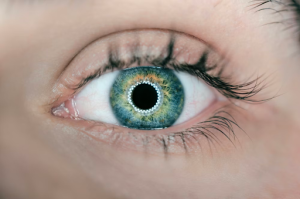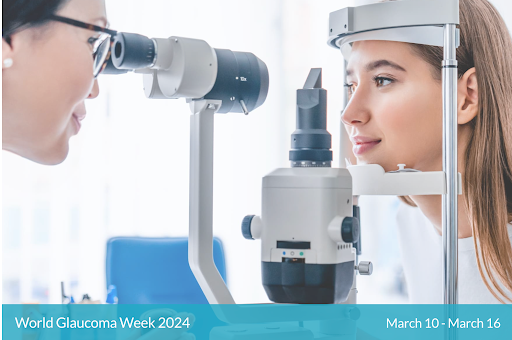Eye Safety and Makeup: How to Keep Your Eyes Healthy and Beautiful
Eye Safety and Makeup: Tips for Healthy Eyes | Best Practice Eyecare
Makeup can enhance your natural beauty, but it’s crucial to use it safely to avoid eye problems. From choosing the right products to proper application techniques, there are many ways to ensure your eyes stay healthy while you enjoy your makeup. This article will share essential tips for eye safety when using makeup, helping you maintain beautiful and healthy eyes.
Choosing the Right Eye Makeup
Selecting safe and appropriate eye makeup is the first step in protecting your eyes.
Avoid Glitter and Metallic Makeup
Glittery and metallic eye makeup can be problematic because tiny particles can fall into your eyes, causing irritation and even infections. These particles can scratch the surface of your eye, especially if you wear contact lenses. Use sparingly if you love sparkles, and avoid applying them near the lash line.
Quality Over Quantity
Invest in high-quality makeup products. Cheaper brands might contain harmful chemicals or lack proper testing. Look for products specifically designed for use around the eyes and avoid those with harsh ingredients.
Check Expiration Dates
Makeup, especially eye products, has a shelf life. Bacteria can grow in makeup over time, leading to infections. To avoid these risks, it’s best to replace your eye makeup every three months.
Proper Application Techniques
How you apply your makeup is as important as the products you choose.
Cleanliness is Key
Always start with clean hands and a clean face. Wash your hands before applying makeup to prevent transferring bacteria or other pathogens and irritants to your eyes. Ensure your brushes and applicators are clean, washing them regularly with mild soap and water.
Careful Application
Apply makeup outside the lash line to avoid blocking the oil glands of the upper or lower eyelid. These glands secrete oils that help protect your eyes. Never apply makeup inside the lash line, as this can introduce bacteria directly to your eyes.
Avoid Sharing Makeup
It might be tempting to share makeup with friends, but this can lead to the spread of bacteria and infections. Always use your makeup and applicators.
Safe Use of False Eyelashes and Eyelash Extensions
False eyelashes and extensions can enhance your look but require careful application and maintenance.
Professional Application
It’s best to go to a professional for eyelash extensions. They have the proper tools and expertise to apply extensions safely, minimising the risk of injury or infection. If you prefer using false lashes at home, use high-quality glue and follow the instructions carefully.
Avoid Magnetic Lashes
Magnetic eyelashes using a magnetic liner can be safer than glue-on lashes if applied correctly. However, if the magnets are too strong, they can pinch the eyelid or irritate. Use them sparingly, and permanently remove them gently.
Preventing Eye Infections
Eye infections can be painful and lead to serious complications. Here’s how to avoid them.
Discard Old Makeup
As mentioned, eye makeup should be replaced every three months. Creamy or liquid eye makeup is particularly prone to bacterial growth. Always check the expiration dates and discard old products.
Avoid Makeup When Infected
If you develop an eye infection, stop using makeup immediately. Discard any products you were using during the infection to prevent recontamination. Wait until the infection has completely cleared before resuming makeup use.
Preventing Allergic Reactions
Allergic reactions to makeup can be uncomfortable and unsightly.
Introduce Products Gradually
When trying new products, introduce them one at a time. This way, if you react, you can quickly identify the culprit. Start with a small amount and observe how your skin reacts over 24 hours.
Know Your Allergens
If you have a history of allergic reactions, learn to identify common allergens in makeup. Check ingredient lists and choose products formulated for sensitive skin.
Avoiding Eye Injuries
Eye injuries can occur if makeup is applied carelessly.
No Makeup on the Move
Never apply makeup while in a moving vehicle. One sudden bump can lead to a severe eye injury. Take your time and apply makeup in a stable environment.
Be Gentle with Tools
If your lashes clump together, avoid using sharp objects to separate them. Instead, use a clean brush to comb through your lashes gently. Sharp objects can easily poke or scratch your eye, leading to injury.
Special Considerations
Certain situations require extra care when using eye makeup.
After Eye Surgery
If you’ve recently had eye surgery, such as LASIK or cataract surgery, avoid wearing makeup around your eyes until your ophthalmologist gives you the green light. Applying makeup too soon can introduce bacteria and other pathogens to the healing area and cause complications.
Using Heated Eyelash Curlers
Heated eyelash curlers can help achieve beautifully curled lashes, but they should be used cautiously. Follow the instructions carefully, and never use a too hot curler, as this can burn your eyelids, eyes or lashes.
Daily Makeup Removal
Removing your makeup properly is just as important as how you apply it.
Gentle Cleansing
Use a gentle makeup remover specifically designed for the eyes. Avoid harsh rubbing or scrubbing, as the skin around your eyes is very delicate. Opt for oil-free removers if you wear contact lenses to prevent residue from clouding your lenses.
Double Cleansing
Consider double cleansing, especially if you wear heavy makeup. Start with a makeup remover, followed by a gentle facial cleanser to ensure all makeup residue is removed. This prevents clogged pores and potential infections.
Regular Eye Exams
Routine eye exams are essential for maintaining good eye health, especially if you regularly use eye makeup.
Why Eye Exams Matter
Regular eye exams can help detect early signs of infections, allergies, or other eye conditions, such as blepharitis, that might be exacerbated by makeup use. Your eye care professional can also give you personalised advice on using makeup safely based on your eye health.
When to Schedule an Exam
Schedule an eye exam with your optometrist at least once a year. If you notice any changes in your vision, discomfort, or signs of infection, don’t wait—make an appointment immediately.
Makeup can be a fun and expressive way to enhance your appearance, but it’s important to prioritise eye safety. By choosing the right products, applying them carefully, and following proper hygiene practices, you can enjoy beautiful makeup looks without compromising your eye health.
At Best Practice Eyecare, we’re dedicated to helping you maintain healthy eyes. If you have any concerns about your eye health or makeup use, don’t hesitate to reach out for advice or a consultation with a referral from your GP or optometrist.
Love your eyes. Get them checked.












